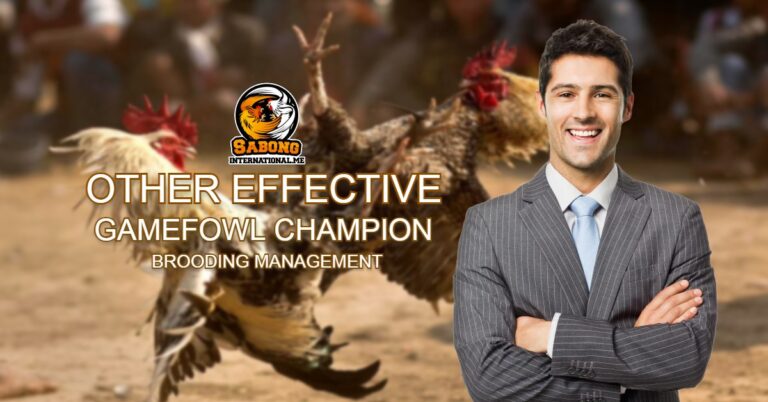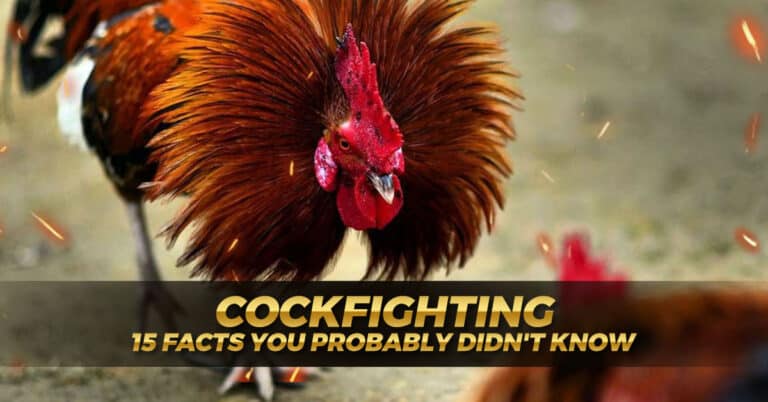The Importance of Weather for Gamefowl Farm
Sabong International provided some advice for gamefowl farming that depends heavily on the weather. The health and production of the birds are directly impacted by temperature, humidity, and precipitation fluctuations because these creatures are sensitive to these conditions. Gamefowl producers must closely watch the weather and modify their management techniques as necessary. Birds may become unwell, suffer injuries, and produce less if this is not done.

Gamefowl Farm Dry and Hot Season
In the sweltering summer, the heat index can reach 44 degrees Celsius, which is higher than the actual temperature. Even throughout this season, there will be only approximately 35% humidity in the air. The summer was occasionally even prolonged. Currently, gamefowl are exposed to hazardous weather. Even if you may believe they are in a shaded place, they are nonetheless vulnerable to death in this dangerous weather.
Typical Illnesses
The heat stress has many detrimental impacts on gamefowl, particularly the gamecocks that are ready to battle. Keep in mind that since gamefowls do not perspire and are warm-blooded, it will be challenging for them to control their body temperature, rendering them susceptible to heat stress. Provide medication for these illnesses because this time of year is characterized by heat stress, poultry cholera, and mycoplasmosis.
You can have some abrupt fatalities of your chickens if you have 100 or more gamefowl in your yard. One of the most likely causes of death during this season is heat stroke. Gamefowls are susceptible to mortality and may perish during this hazardous season if they are also suffering from other undiagnosed illnesses.
Managing Gamefowl Farm When Dry and Hot Season
Planning carefully and paying attention to details are essential when managing a gamefowl farm during dry and hot seasons. Managing weather fluctuations on a gamefowl farm requires the following advice.

Prepared for Battle on the Keep
You might see that some of the trained gamefowls aren’t giving their best efforts due to this bad season. Take excellent care of your gamefowls before the fight so they can perform to the best of their abilities. Reduce the stress caused, particularly during the pointing time (last 3 days).
Simply because it’s hot outside on fight day, you might want to offer them lots of water and regulate moisture as usual, but keep the heat index under control. If your gamefowl house isn’t air-conditioned, surround it with lots of fresh banana leaves and replace them every day. Remember to store the leaves at night so they don’t produce carbon dioxide instead of helping to absorb it and provide oxygen.
All Gamefowls
Give them access to water all day, and keep it in the area of the teepees that are shaded. You can aid them during this season by putting electrolytes in their water. Some farms, as you can see, turn off the water after every meal; this is a major no-no for this season. For some chickens during this hazardous season, that water can be the difference between life and death.

Likewise, guarantee a balanced diet for them. If there is a lack of the vitamins and minerals that their biological systems depend on to function properly, the hens will struggle to survive this hot season.
It is a typical practice to reduce part of the carbohydrates in their diet when it comes to diet. Additionally, since fats operate as an insulator, the problem is exacerbated by the fact that they keep people warm.
The Gamefowl Farm Environment
Make the grass, trees, and other plants green. As the rainy season arrives, planting time is if you don’t have enough trees.
As much water as is required to keep the trees, grass, and plants green. When compared to areas without grass, those with grass have very low heat indexes.
The heat index is significantly lowered by trees. It provides shading and deflects heat radiation. You might want to add enough trees to the farm so that it is slightly shaded, but avoid making the farm’s surroundings too dark.
Avoid using the wheeled and concrete teepees if there aren’t enough trees in your camping area. Even though they may be sturdy, heat buildup will undoubtedly cause issues. Go under the wheel teepees and smell the air there if they have been exposed to the sun for a time. If you can smell something burning like rubber, you have likely been in the sun for some time. If not, everything is good.
If there aren’t enough trees, it helps to remove the feathers on those concrete ones. It causes the feathers to degenerate too soon, and gamecock performance is impacted by feathers.
Gamefowl Farm on Rainy Season
The rainy season is approaching, but perhaps a little later than usual due to the shifting environment. Heavy rainfall is typical in tropical regions of the world. And the gamefowl can suffer greatly from this torrential downpour.
Despite being pounded by typhoons for almost two weeks, farms with a good environment and with proper health management won’t experience any major issues. Rain is not a real issue and is easier to manage than in the hot summer months. It may be time to revisit the farm environment and health program for individuals who are experiencing difficulties during the rainy season.

Environment Disease
The increased moisture in the air is one issue with the rainy season. Pathogens are active and more likely to spread on damp ground. Because most infections thrive in damp environments.
Infection Flushing
It would be preferable if you administered a different antibiotic family as part of a scheduled bacterial flushing procedure every three weeks. The infections would have an additional line of defense, and certain antibiotics encourage development.
Typical Illnesses
Fowl typhoid, infectious coryza, fowl cholera, and E. For farms with good farm management and health programs, coli may occur seldom; for farms with poor management and programs, coli will occur frequently. It is time to go over these diseases’ symptoms. As soon as signs and symptoms are noticed, have the medication available for immediate treatment.
The leftover feed on the ground is now developing mold. Toxic to chickens, most of these molds. Don’t feed animals more than they can consume.
Litter Management for Gamefowl Farm When Rainy Season
Because of this, the farm needs to be cleaned, especially now. If the area is not cleaned as the droppings collect, the bacteria will grow. Infections now start to happen as the germs grow and spread to the gamefowl.
If you do not clean the farm’s feces. Spraying around with benevolent microbes is necessary. The pathogens (bad bacteria) are now inactivated as a result of the good bacteria outcompeting the bad ones in the environment. You can spray every time it rains and twice a week. For further information, see helpful microorganisms.
Chicks
Although the specified wet season is not a problem, the batch’s problems are partly caused by the continuous drafty weather experienced by young off-season chicks. When it rains, especially when it does so heavily, chicks cannot generate enough body heat to elevate their body temperature. Also, they are vulnerable to becoming wet because their feathers haven’t fully formed. Thus, provide a well-covered facility where the chicks can go if you’re still ranging in this season, similar to the aforementioned offseason production, to reduce the need for this season’s draft.
Molting
And as the majority of adult game birds begin to molt, they are now more susceptible to getting wet whenever it rains. And now ailments will appear if the gamefowl’s resistance and immune system aren’t strong enough to handle this. Yet the gamefowls would be fine if their immune system and resistance were strong. To prevent issues, it would be better to provide some assurance to the diet that the gamefowls are receiving a healthy diet. We utilize OHN as a powerful immune system booster during this season.
Ready-to-fights
Avoid getting the gamecocks that will be fought wet, especially over a longer time and in the final three days before the fight. Over the past three days, there has been a mange draft on the gamefowl house to prevent the birds from being damp. With time, this moisture is absorbed inside, making the gamecocks lethargic and more likely to bleed. Genuinely wet feathers during a fight have a significant impact on the gamefowl’s performance.
Poles
The short poles should also be replaced at this time. Because of the dampness of the ground during the rainy season, poles are more prone to be pulled out, leading to inadvertent gamecock fighting.
The Role of the Whole Gamefowl Farm Environment
Finally, an abrupt shift in the weather is linked to disease. Consider a situation where it has been raining for a while and then a warm sunny day appears or the opposite. This abrupt change causes numerous issues, leads to infections, and, if properly managed, might cause a significant decline in the quality of gamefowl. And how much more if there aren’t enough trees near your farm?

Do not raise game birds in wet areas. The ideal soil for gamefowl is sandy loam. Make drainage for the entire farm so the water may readily drain. There are several obvious reasons to cover the land with grass.
Recall that the farm’s overall management and health program remain crucial. A strong nutrition and immune system are provided by a good health program with effective management in a good environment, which leads to a good higher performance.
Conclusion
The farming of gamefowl can be significantly impacted by changes in the weather. Yet, with careful preparation and attention to detail, farmers can handle these fluctuations and maintain the well-being and productivity of their flocks. Sudden weather changes can be particularly difficult. Gamefowl producers can weather any storm by keeping an eye on the weather, offering enough shelter, modifying feeding and watering procedures, and calling in experts as needed.










